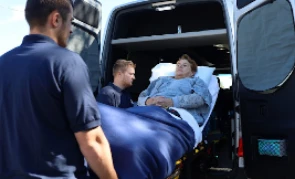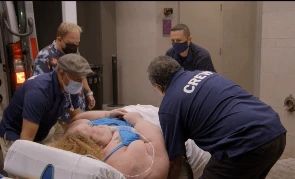Many kids love traveling, because they view opportunities to do so as adventures. However, if you have a child who’s coping with a severe handicap, even the thought of going somewhere unfamiliar can be very daunting. Make things easier by hiring a long-distance handicapped transport service and following the tips below.
Many companies can accommodate clients in as little as 24 hours. However, it’s always better to err on the side of caution by booking as far in advance as you’re able. In many ways, transporting pediatric patients is almost the same as moving adult patients. Despite the similarities, a long-distance handicapped transport team may need to make sure they have a smaller-sized bed available, and are equipped to provide the less potent doses of medication children often require.
Kids often get very anxious due to new experiences. If your child has not traveled away from home before, or you’re working with a new specialty transport company, be sure to explain things as carefully as possible. When questions arise, do your best to answer them as calmly, without being dishonest.
Before the day of the trip, talk with the long-distance handicapped transport company to find out precisely what items or paperwork you need to provide to fulfill your part of helping the journey go well. For example, many companies require that the child travel with at least a couple of days worth of medication. If you’re not traveling with your youngster, it may be necessary to sign consent forms or give special instructions about what should be done after reaching the destination.
Always offer details for at least one person who has agreed to act as a point of contact in an emergency situation. While it’s more than likely the trip will be free of problems, you can never be too prepared for potential challenges. Be as specific as you can, such as designating one person to be a daytime contact, and another to be available at night.
By following these tips, you should find that your experience with a long-distance handicapped transport company goes more smoothly for both you and your pediatric patient.

When choosing a medical transport service provider, you must ensure to choose one that not only focuses on getting you to your destination, but also prioritizes using the safest, most conducive, and most efficient sets of vehicle fleets and equipment to do the job.

ACC Medlink appeared on the TLC television network reality show “1000 LB Sisters” to transport one of the cast members from Ohio to a doctor in Kentucky. ACC Medlink, four of its employees, and the journey they took with Tammy Slaton were featured in episode 6 of season 4.

ACC Medlink is proud to announce the addition of a new line of elite medical sprinter vans to our long distance medical transport fleet. This addition will allow ACC Medlink to continue to provide superior service and outstanding care for those in need of medical transport out of state...
